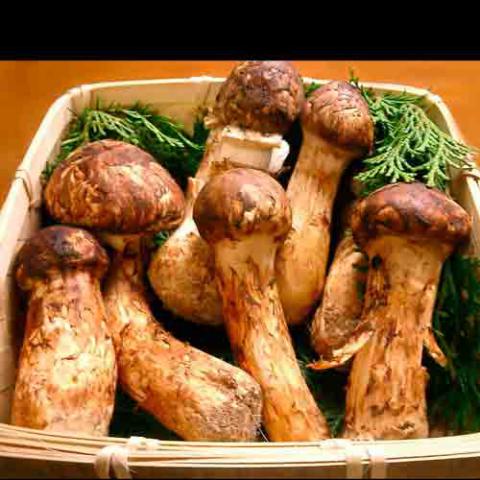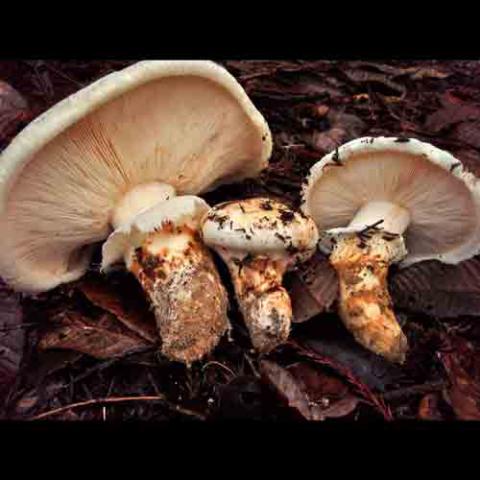NAMES
TAXONOMY
FUNGI ID
THERAPEUTIC
South Korea
Issued:
Stamp:
Tricholoma matsutake
South Korea
Issued:
Stamp:
Tricholoma matsutake
South Korea
Issued:
Stamp:
Tricholoma matsutake
"For decades, diminutive button mushrooms — pallid and “bred for the back of a truck,” as Andrew Carter, the chief executive officer of Smallhold, describes them — have dominated American sales; now, meatier species like shiitakes, hen of the woods and wild matsutakes are increasingly finding a place on the table. (That is, if you can afford them: Prices for foraged Japanese matsutakes, which grow in pine forests and, like truffles, have thus far resisted attempts at commercial cultivation, hit $395 per pound in Tokyo last September.)"
"Consider the smell of matsutake again. It is time to tell you that most people of European origin can't stand the smell. A Norwegian gave the Eurasian species its first scientific name, Tricholoma nauseosum, the nauseating Trich. (In recent years, taxonomists made an exception to usual rules of precedence to rename the mushroom, acknowledging Japanese tastes, as Tricholoma matsutake.)"
Genus species (Fungi): Tricholoma matsutake
Matsutake (Tricholoma matsutake = syn. T. nauseosum = syn. Armillaria ponderosa) is the common name for a highly sought mycorrhizal mushroom that grows in Asia, Europe, and North America. It is prized in Japanese, Korean, and Chinese cuisines for its distinct spicy-aromatic odor.
Habitat and Distribution
Matsutake mushrooms grow under trees and are usually concealed under litter on the forest floor, forming a symbiotic relationship with roots of various tree species.
Matsutake mushrooms grow in eastern Asia in China, Japan, Korea, Bhutan and Laos; in Europe, in Estonia, Finland, Norway, Poland and Sweden; and on the Pacific coasts of Canada and the United States.
In Korea and Japan, matsutake mushrooms are most commonly associated with Pinus densiflora.
Cost and availability
Though simple to harvest, matsutake are hard to find because of their specific growth requirements and the rarity of appropriate forest and terrain, combined with competition from local folk and wild animals such as squirrel, rabbits and deer for the once-yearly harvest of mushrooms, causing the price to be very high at times or as low as $4.41 per kilogram ($2 per pound) for pickers when the market will bear it. Domestic production of matsutake in Japan has been sharply reduced over the last 50 years due to the pine-killing nematode Bursaphelenchus xylophilus, which has influenced the price a great deal. The annual harvest of matsutake in Japan is now less than 1,000 tons, and the Japanese mushroom supply is largely made up by imports from China, Korea, America's Pacific Northwest, and British Columbia), and northern Europe. The price for matsutake in the Japanese market is highly dependent on quality, availability, and origin. The Japanese matsutake at the beginning of the season, which is the highest grade, can go up to $1,000 per kilogram. In contrast, the average value for imported matsutake is about $90 per kilogram.
Reference: Wikipedia



